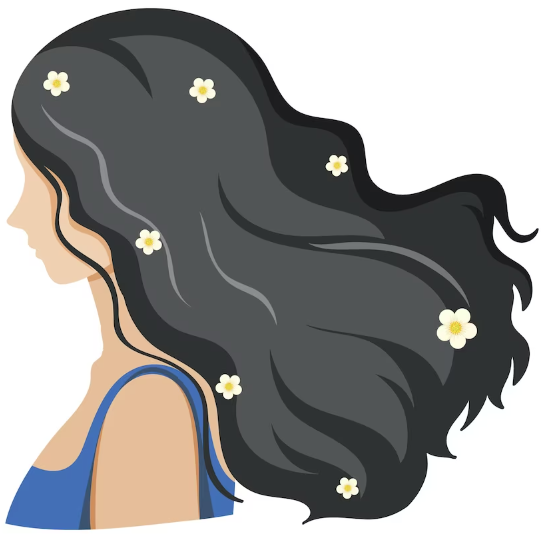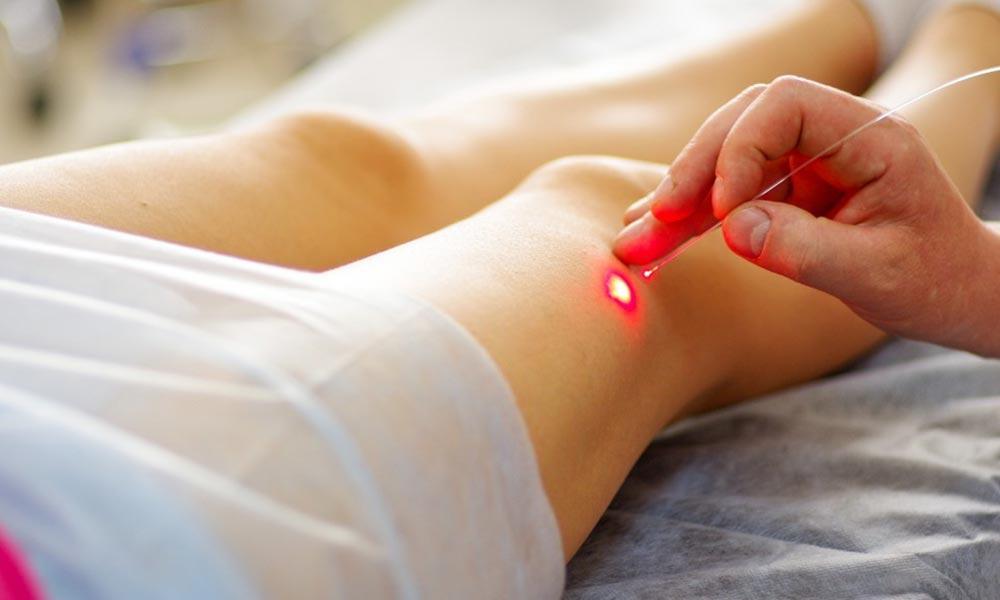Picture this: You’re flipping through a magazine, mesmerized by a model’s cascading, sun-kissed hair. You yearn for that same level of shine and health, but your mane feels more like a dried-out mop. Fear not, fellow hair warriors! This blog is your ultimate guide to achieving the healthy, shiny hair you’ve always dreamed of. Whether you’re battling frizz, dryness, or lackluster locks, we’ll explore everything you need to know about building a personalized hair care routine, from understanding your unique hair type to harnessing the power of natural remedies and dietary tweaks. So, buckle up and get ready to unlock the secrets to hair that turns heads and radiates confidence. Let’s embark on this journey together, one strand at a time!
Understanding Hair Health
Before diving into the exciting world of hair care routines, let’s first take a moment to understand the science behind it all. Hair, both visible and hidden beneath the surface, is comprised of intricate structures that influence its growth and appearance.
The Anatomy of a Hair Strand:
- Hair shaft: This is the visible portion of the hair, made up of tightly packed keratin cells. The shaft’s structure determines your hair type, whether straight, curly or somewhere in between.
- Hair follicle: This is the root of the hair, located beneath the scalp. It houses the hair bulb, where new cells are produced and growth occurs.
- Hair cortex: This is the inner layer of the hair shaft, responsible for its strength, elasticity, and color.
Hair Types and Their Needs:
Hair comes in a diverse array of types, each with its unique set of needs. Recognizing your hair type is crucial for choosing the right products and styling techniques. Here are some common hair types:
- Straight: Straight hair has minimal curl and tends to be oily at the roots and dry at the ends. It requires gentle cleansing and regular conditioning.
- Curly: Curly hair has a distinct S-shaped pattern and can be prone to frizz and dryness. It needs gentle handling, deep conditioning, and products formulated for curls.
- Wavy: Wavy hair falls somewhere between straight and curly, with a slight S-shaped pattern. It needs a balance of moisture and hold to maintain its shape without frizz.
- Coily: Coily hair has a tight, spring-like curl pattern and requires frequent moisturizing and gentle manipulation to avoid breakage.
- Medulla: A soft, central core found in thicker hair types, it provides structural support.
Factors Affecting Hair Health:
Several factors beyond your hair care routine can influence the health of your hair:
- Genetics: Your genes play a significant role in determining your hair type, texture, and growth rate.
- Diet: Eating a balanced diet rich in essential nutrients like vitamins A, C, D, E, iron, and biotin is vital for healthy hair growth.
- Stress: Chronic stress can negatively impact hair health, leading to hair loss and thinning.
- Environmental factors: Sun exposure, pollution, and harsh chemicals can damage the hair shaft and scalp, leading to dryness, frizz, and breakage.
Understanding these factors and how they interact with your hair type is key to designing an effective hair care regimen. By addressing these underlying issues, you can create the ideal environment for your hair to thrive.
Building Your Personalized Hair Care Routine
Now that you understand your hair’s anatomy and how various factors influence its health, it’s time to build your customized hair care routine. Here are some key aspects to focus on:
1. Shampooing:
Washing your hair removes dirt, oil, and product buildup, but over-shampooing can strip your hair of natural oils. Frequency depends on your hair type, but 2-3 times a week is generally recommended. Choose a sulphate free shampoo formulated for your hair type and massage it gently into the scalp, avoiding the ends.
2. Conditioning:
Conditioning replenishes moisture and detangles hair. Use a leave-in conditioner for daily moisture and a deep conditioner 1-2 times a week for intense hydration. Apply conditioner to the mid-lengths and ends, avoiding the roots to prevent greasy buildup.
3. Deep Conditioning:
Deep conditioners penetrate deeper into the hair shaft, providing intense nourishment and repair. Choose a deep conditioner based on your hair concern and apply it to clean damp hair. Leave it on for 20-30 minutes before rinsing thoroughly.
4. Styling:
While heat styling can achieve gorgeous results, it can also damage your hair. Use the lowest heat setting possible and apply a heat protectant spray beforehand. Minimize heat styling frequency and consider air-drying whenever possible.
5. Hair Masks and Treatments:
Natural and store-bought hair masks and treatments cater to specific hair concerns like dryness, frizz, or damage. Choose ingredients based on your needs and apply them according to the instructions. These can be an excellent way to pamper your hair and address specific problems.
By incorporating these essential steps into your routine and tailoring them to your unique hair type, you will be well on your way to achieving the healthy, shiny hair you deserve.
Nutritional Support for Hair Growth
Nourishing your body from the inside out plays a crucial role in achieving healthy, vibrant hair. Let’s explore some key nutrients and dietary strategies to support your hair growth journey:
1. Essential Vitamins and Minerals:
- Vitamin A: Promotes healthy scalp and hair production. Found in carrots, eggs, and sweet potatoes.
- Vitamin C: Aids in collagen production, which is essential for hair structure. Citrus fruits, bell peppers, and broccoli are excellent sources.
- Vitamin D: Regulates hair growth cycle. Sunlight exposure is the primary source, but foods like fatty fish and fortified milk can help supplement.
- Vitamin E: Protects hair from oxidative damage. Include almonds, spinach, and avocados in your diet.
- Iron: Delivers oxygen to the hair follicles, promoting growth. Lean meats, leafy greens, and beans are good sources.
- Biotin: Contributes to keratin production, strengthening hair. Eggs, nuts, and legumes are rich in biotin.
2. Dietary Tips for Hair Health:
- Eat a balanced diet: Focus on whole foods like fruits, vegetables, whole grains, and lean protein.
- Hydration is key: Aim for 8-10 glasses of water per day for optimal scalp and hair health.
- Omega-3 fatty acids: Found in fatty fish like salmon, mackerel, and tuna, these fats nourish the scalp and promote hair growth.
- Limit processed foods: Processed foods are often high in sugar and unhealthy fats, which can negatively impact hair health.
- Consider consulting a nutritionist: For personalized dietary advice based on your unique needs.
3. Supplements for Hair Growth:
While a balanced diet should provide the most essential nutrients, some individuals may benefit from hair growth supplements.
Benefits:
- Fortified support: Fill in potential dietary gaps.
- Targeted nutrients: Address specific hair concerns like thinning or breakage.
- Convenience: Provide a quick and easy way to boost nutrient intake.
Drawbacks:
- Not a replacement for a healthy diet: Supplements should complement a balanced diet, not replace it.
- Potential side effects: Consult your doctor before starting any supplements, particularly if you have any underlying health conditions.
- Regulation: Hair growth supplements are not regulated by the FDA, so choose reputable brands and verify ingredients.
Remember, the best approach to hair health is a holistic one. Combine a balanced diet with a personalized hair care routine and consult your doctor if you have any concerns or questions.
Addressing Common Hair Concerns:
Despite our best efforts, sometimes hair struggles arise. Let’s explore solutions for some common hair concerns:
Dry Hair:
Causes:
Dry hair can be caused by various factors, including genetics, environmental factors like harsh weather, and over-styling with heat tools.
Solutions:
- Moisturizing products: Use a shampoo and conditioner formulated for dry hair. Look for ingredients like shea butter, coconut oil, and hyaluronic acid.
- Deep Conditioning: Deep condition your hair once or twice a week to replenish moisture.
- Minimize heat styling: Air-dry your hair whenever possible and use a heat protectant when heat styling is necessary.
- Dietary changes: Increase your intake of omega-3 fatty acids and foods rich in vitamins A, C, and E.
- Hydration: Drink plenty of water to stay hydrated from within.
Dandruff:
Causes:
Dandruff can result from dry scalp, irritation from harsh shampoos, fungal infections, and certain skin conditions like seborrheic dermatitis.
Solutions:
- Anti-dandruff shampoo: Use an over-the-counter anti-dandruff shampoo containing ingredients like zinc pyrithione or ketoconazole.
- Scalp exfoliation: Exfoliate your scalp regularly with a gentle scrub to remove dead skin cells.
- Dietary changes: Reduce sugar intake and incorporate foods rich in B vitamins and zinc.
- Consult a dermatologist: If your dandruff is severe or doesn’t improve with home remedies, consult a dermatologist for diagnosis and treatment.
Hair Loss:
Types:
Hair loss can manifest in various forms, including thinning, bald patches, or excessive shedding.
Causes:
Hair loss can be caused by various factors, including genetics, hormonal changes, stress, nutritional deficiencies, and certain medical conditions.
Solutions:
- Identify the cause: Determining the underlying cause of your hair loss is crucial for finding the right treatment. Consult a doctor or dermatologist for proper diagnosis.
- Medications: Depending on the cause, prescription medications might be available to address hair loss.
- Hair loss treatments: Certain treatments like minoxidil or laser therapy can stimulate hair growth.
- Dietary adjustments: Ensure a balanced diet rich in essential nutrients for hair growth.
- Stress reduction: Manage stress through relaxation techniques to mitigate its impact on hair health.
- Protective hairstyles: Avoid hairstyles that put stress on the hair, like tight braids or ponytails.
Remember, addressing hair concerns requires a personalized approach. Consulting a doctor or trichologist can help determine the cause of your issue and recommend the most effective treatment plan.
Lifestyle Habits for Healthy Hair:
Beyond your hair care routine, adopting healthy lifestyle habits can significantly impact your hair’s health and growth. Here are a few key aspects to focus on:
Managing Stress:
Chronic stress can disrupt hair growth and lead to thinning or shedding. Implement stress management techniques like yoga, meditation, deep breathing, or spending time in nature to promote relaxation and regulate cortisol levels.
Getting Enough Sleep:
While you slumber, your body works magic to repair and rejuvenate itself, including your hair. Aim for 7-8 hours of quality sleep each night to support optimal hair growth and overall health.
Drinking Plenty of Water:
Hydration is crucial for overall health, including hair health. Aim to drink 8-10 glasses of water per day to keep your scalp and hair hydrated and prevent dryness.
By incorporating these simple lifestyle changes into your daily routine, you’ll be nurturing your hair from the inside out and paving the way for healthy, vibrant locks.
Conclusion: Unlock Your Hair’s Full Potential
Remember, achieving healthy, shiny hair is a journey, not a destination. By understanding your unique hair type, tailoring a personalized routine with proper cleansing, conditioning, and styling, nourishing your body with a balanced diet and hydration, and adopting healthy lifestyle habits, you’ll be well on your way to unlocking your hair’s full potential.
Embrace the holistic approach to hair care. Prioritize your overall well-being, manage stress effectively, and prioritize sleep. Remember, healthy hair reflects a healthy you.
This blog is just the beginning of your journey. Dive deeper into the vast world of hair care by exploring the resources provided throughout the article. Share your own hair care tips and experiences in the comment section below, and let’s learn from each other! Together, we can create a community of empowered individuals embracing their unique hair journeys.




